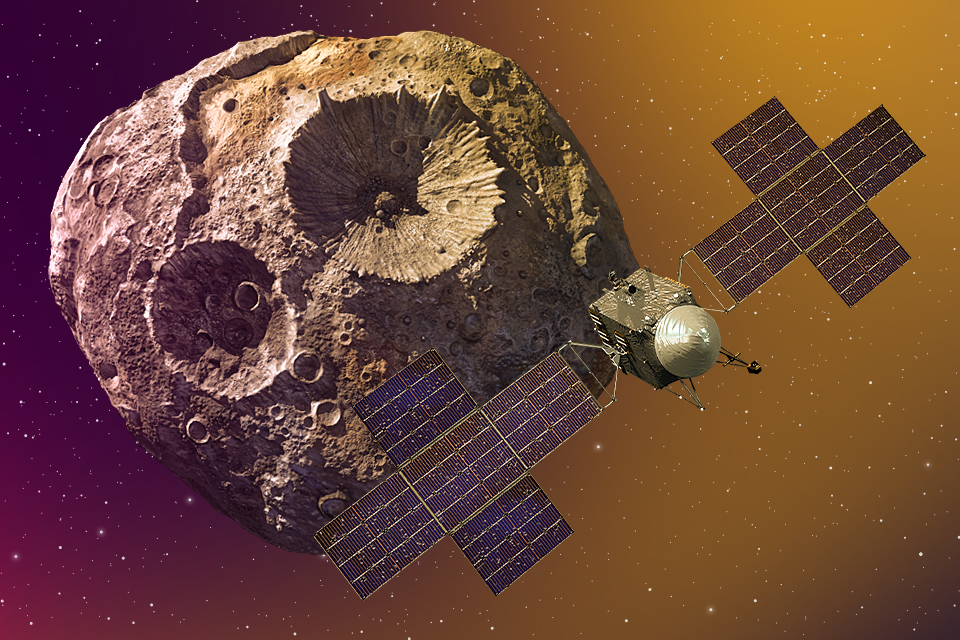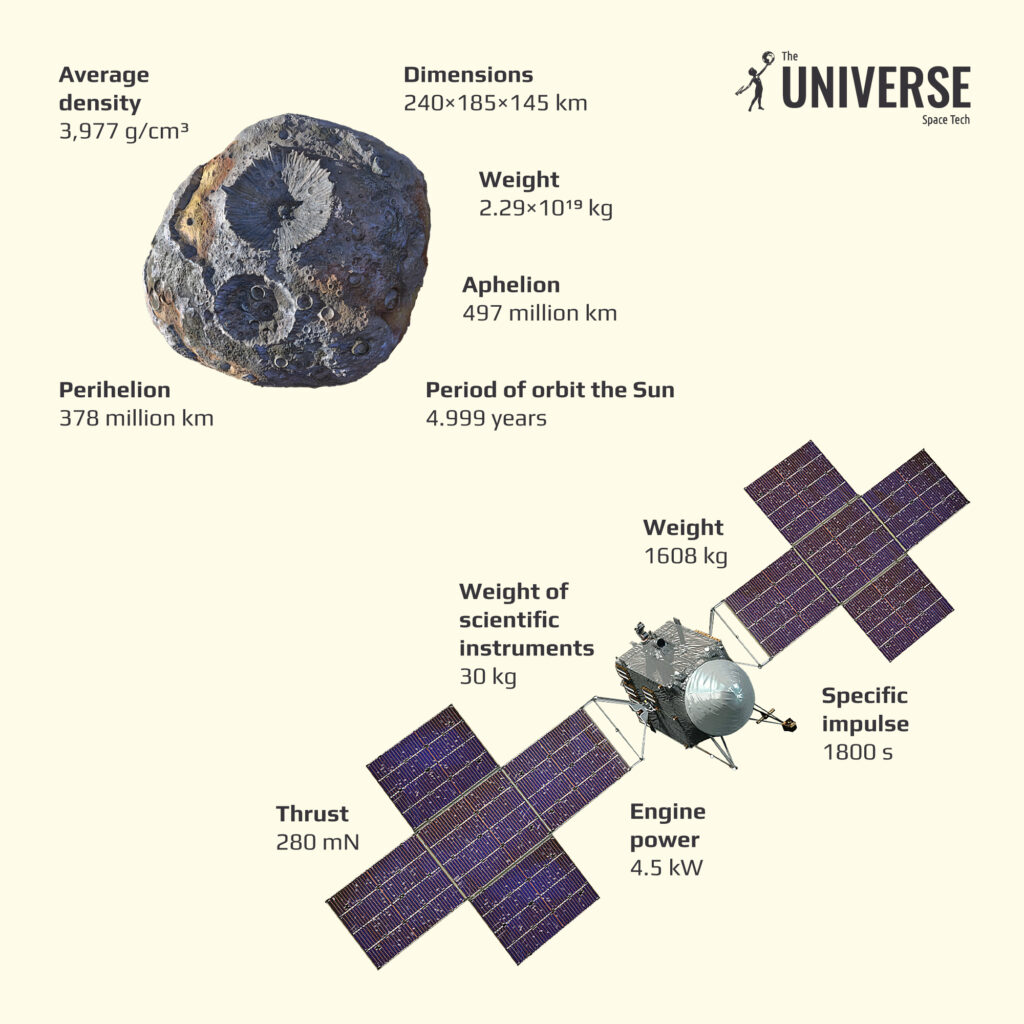On October 12, the Psyche mission is to launch into space. The target of the automatic scout will be the asteroid Psyche. Unlike the OSIRIS-REx probe, which recently completed its journey, this spacecraft will not return any samples to Earth. However, its research will be no less interesting.

1. What is interesting about the asteroid Psyche?
Psyche (16 Psyche) is an asteroid of the main belt. Its average distance from the Sun is 437 million km. It never gets close to the Earth. This body has an extremely irregular shape and dimensions of 240×185×145 km, which allows it to enter the top ten largest asteroids of the belt.
What makes Psyche interesting is its chemical composition and high density, which is 3.977 g/cm3. This celestial body belongs to the metallic asteroids and is the largest of them.
Such objects are quite rare. It is assumed that Psyche is the remains of the core of some much larger body destroyed as a result of the collision. Also the inclination of the axis of rotation of the asteroid, which is 95°, is interesting. In fact, it moves in orbit, “lying on its side”, like the planet Uranus.
2. What will Psyche try to find out?
Psyche will study the structure, shape, chemical composition, magnetic field and mass distribution of the asteroid. The main question that the spacecraft should answer is whether this asteroid is really the metal core of another body, or whether it formed on its own.
If Psyche really once lost a significant part of the non-metallic crust, scientists would use the spacecraft to try to find out when and under what circumstances it happened. They will also have a unique opportunity to look inside our own planet; it is believed that metallic asteroids are similar to the cores of terrestrial planets.
3. What scientific instruments are installed on board the spacecraft?
There are several scientific instruments on board Psyche that will help it fulfill its mission. A high-resolution multispectral camera can distinguish between metallic and silicate surface areas. The neutron and gamma particle spectrometer will analyze the chemical composition of the asteroid. The magnetometer will allow it to find out whether Psyche has at least some residual charge and magnetic field, and the communication system will accurately determine the parameters of the spacecraft’s orbit at each point, which will make it possible to study the gravitational field of the object of research.
4. What is unique about the probe design?
The Psyche design contains two quite interesting technical innovations. The first is an electric jet engine based on the Hall effect. Its specific impulse is 1800 s, which is 3.5 times more than that of chemical engines. Due to this, the spacecraft will perform the entire flight program using only 425 kg of xenon, which will serve as the working body of the engine.
The second technical novelty will be an experimental laser communication system. Instead of sending radio signals to Earth, Psyche will transmit a digital code with a laser beam. It will be received by the telescope at the Palomar Observatory. It is expected that in this way, it will be possible to transmit data 10–100 times faster than through the mediation of radio waves.

5. How fast will Psyche get to the target?
The journey of Psyche to its target cannot be called fast. The idea of the mission was publicly presented at the beginning of 2015. In 2017, it was announced that it was really being implemented. At the same time, 2022 was chosen as the launch date. However, later the launch was postponed for another year, because the next start window fell on October 2023.
However, the launch on October 12 will only be the beginning of the spacecraft’s journey. During the flight, it should make one and a half orbits of the Sun and perform a gravitational maneuver near Mars. It will arrive at Psyche in 2029, enter orbit around it, and begin to slowly decline, conducting research for at least 21 months.
Follow us on Twitter to get the most interesting space news in time
https://twitter.com/ust_magazine
